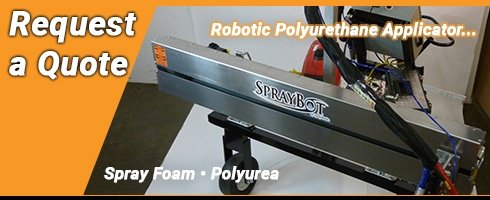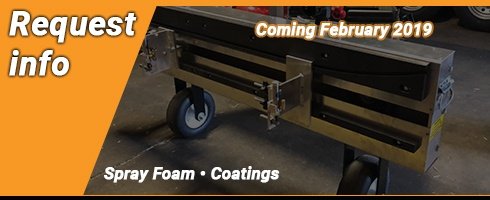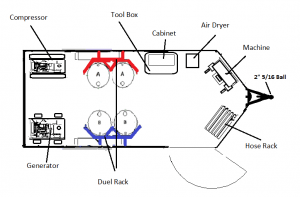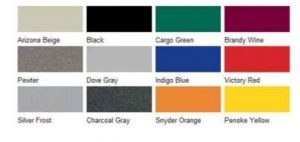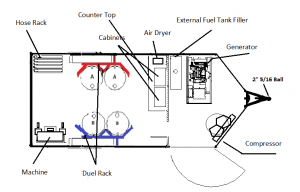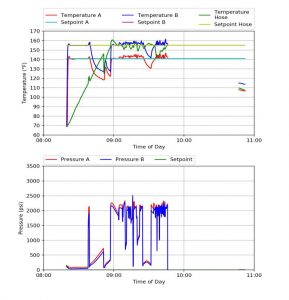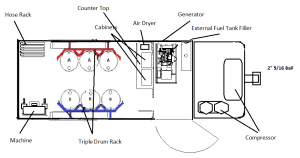With the cold weather quickly approaching and roughly 20 good working days between now and Thanksgiving, it’s important to make the most of product yield and production by being prepared. Make sure drums are warm and ready for the job by keeping them heated with products such as the Barrel Blazer heating system. Temps are dropping in evening, so container temps are going to drop. Plan ahead and be effective!
Formats: Quote
Inspect Your Hoses
Over a short period of time, ISO material can accumulate on the pump – preventing the equipment from working correctly and causing potential damage. A quick daily inspection and removal of crystallization can prevent costly down time and will extend the life of your pump.
Follow this daily check with inspecting the bottom foot valve housing from potential obstruction. Lastly, color code the transfer pump ‘red’ for isocyanate and ‘blue’ for resin.
Weather Conditions
As seasons begin to change, it’s easy to overlook the still-frigid-nights with the sunny days. Temperatures fluctuate from day to night, even in the spring and summer, so I recommend keeping your material stored and warm overnight. Don’t let the sun fool you!
Making a Record of Your Parts
Proper part identification is extremely important to ensure you are receiving the correct part for your machine. If a part is ordered by the wrong number, the wrong part is shipped and extra shipping charges are incurred for returns. But more important than the extra shipping involved, is the possible loss of production time that this unnecessary delay may cause you.
I recommend making a record of all part numbers, as equipment is purchased. This will help prevent delays and added expense.
Choosing a Screen
Machine screens and spray gun screens come in three different sizes; 80, 60, and 40 mesh. Using a larger mesh filter allows smaller particles to pass through your processing system and out the spray tip of the gun. For most polyurethane foam and polyurea, I suggest using 60 or 40 mesh screen to reduce filter clogging.
Cleaning A/B Filters
Sometimes chemical cleaning the A and B filters can leave too much residue and plug up the screen hole. My suggestion? Re-new your filter screens.
You can do it with a few tricks. Try using a light amount of heat from a torch and burn out any restrictions. Once the restrictions are burned off, use air to blow out excess from the screens. Finally, hold your screen up to a light to ensure it is clear and ready to use again.
Service Hoses
It’s important to service hoses at least once per year. Periodic inspections assure the integrity of the protective wrap by repairing worn areas. Small, but mighty, the protective wrap is vital in protecting the hoses and electric lines. So, when hoses are rubbed or worn thin, bursting can happen. Also, when electric lines are exposed, shock hazards and hot spots are a real concern – resulting in poor heating performance and leading to failure, damages, and injury.
It seems tedious, but proper inspection and service of the hose requires removal of all protective coverings, inspection of each material, electrical and air line for slices or areas which have worn or the hose has pulled apart at the jacketing. If you see any corrosion in the fittings, a simple acid wash and wiping off excess areas with steel wool, will help. Make sure you wipe clean then apply a light film of rust inhibitive paint. Inspect all electrical connections and exposed wires, then repair as necessary to test for continuity. It’s vital to make sure connections are properly sealed from weather.
Lastly, perform a 15 minute working pressure test (confirm test pressures for specific hose) and then rewrap the hose accordingly. It seems like a lot of steps, but trust me, you’ll be glad you did it!

